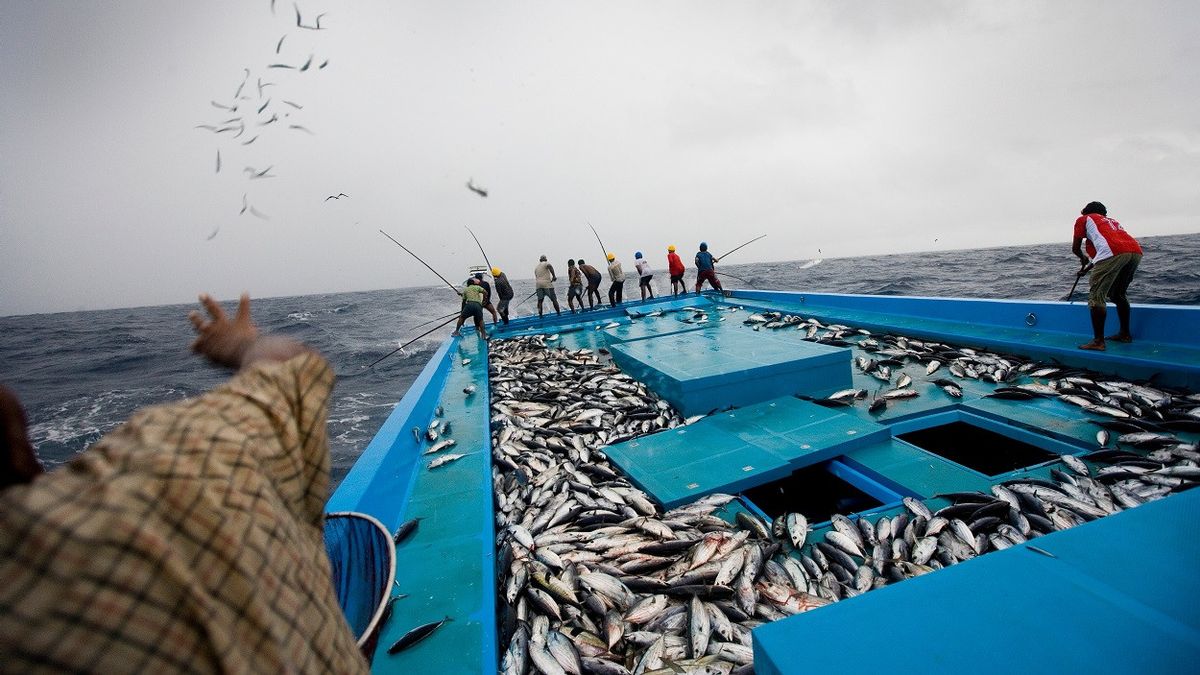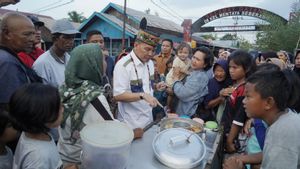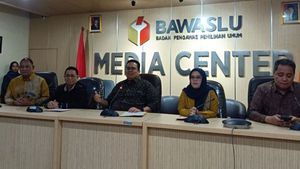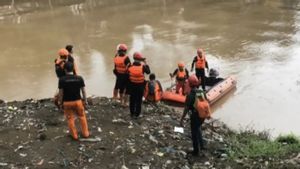JAKARTA - For half a century, Takeo Nakajo has been catching katsuo, or skipjack, which is indispensable in Japanese cuisine whether eaten raw (sushi/sashimi), dried or used as a stock base.
However, he and other fishermen in Kure, Kochi Prefecture in southwestern Japan, have seen something worrying in the last two years, an unprecedented amount of fatty katsuo.
While heavier katsuo means more money, locals and experts say it points to climate change and the risk that katsuo numbers are already under threat, due to increased demand and overfishing.
"That fatty katsuo must have something to do with the temperature of the water. I have a sense of urgency thinking what if the katsuo doesn't come to the bay one day," said Nakajo, 70, quoted by Reuters July 12.
Meanwhile, Noriaki Ito, head chef at the century-old Tsukasa restaurant in Kochi City, said he had also "never seen such fatty katsuo during this season of the year".
This is worrying because changes in the ocean and climate have wiped out several other fish, "including a clam fish called chambara-gai which used to be a specialty of Kochi", Ito added.

Native to tropical waters, some Pacific katsuo migrate north through warm ocean currents each spring, making the arc-shaped bay of Kochi a fertile fishing ground.
The bay's average winter surface temperature has risen 2 degrees Celsius in the four decades to 2015, local fisheries lab data show. The fatter Katsuo may be due to more prey in warmer seas.
But in the long term, this warming could prevent mineral-rich water from rising to the surface, resulting in a decrease in plankton and smaller fish to eat, leading to less katsuo, said Hideyuki Ukeda, an agricultural scientist and vice president of Kochi University.
This comes as Japan's aging population threatens the sustainability of local fisheries and related businesses, such as the production of dried and fermented katsuo, to wasabi radish, a delicious condiment tucked under the fish in a piece of sushi.
In Kure, a district in Nakatosa City, many fishermen have gone out of business in the last three decades, says Takahiro Tanaka, a fourth-generation fishmonger who calls himself a 'katsuo sommelier'.
"We can distinguish the different flavors of katsuo, just as ordinary French farmers enjoy the subtlety of grapes. This place is perhaps one of the last communities in Japan where katsuo is part of everyday culture," explains Tanaka.
"But without fishermen, this won't last long," said Tanaka.
Nakajo fishermen also deplore the aging community and fewer successors. "I asked my grandson if he would take over, but he is now studying to work in a government office," explains Nakajo.

Meanwhile, overfishing has hit catches and dealt a blow to fishermen in Kochi who stick to traditional single pole fishing methods versus large-scale trawl fishing in the western Pacific.
Government data show that catches in Kochi are only a quarter of their 1980s peak.
"We have observed a large decline in landings over the last 10 years or so," explains Ukeda.
"More and more people are afraid we won't be able to eat katsuo any time soon if things continue like this," he said.
It is known that the production of katsuobushi, dried and fermented katsuo, which is often used as a shaved condiment over traditional Japanese dishes or as a stock base ingredient, has begun to decrease.
The number of katsuobushi producers in Kochi has plummeted from dozens about forty years ago to just a few, said Taichi Takeuchi, who runs one in the Usa city.
"I'm really not sure if we can continue this," said Takeuchi.
Not only that, Wasabi, a horseradish essential to Japanese food, especially sashimi and sushi, faces similar production challenges.
The typhoon and rising temperatures have hurt production in Okutama, a mountainous area west of Tokyo, said Masahiro Hoshina, 72, head of the local wasabi farmers' association.
"I am very worried about the future of our agriculture," he said.
The number of farmers in the area is down 75 percent from the 1950s due to depopulation, and if nothing changes, some fear the sushi itself could be threatened with extinction.
"The combination of raw fish and spices like katsuo and wasabi is an art, and both of them must be preserved. I never want to think about a future without them," concluded Ukeda.
The English, Chinese, Japanese, Arabic, and French versions are automatically generated by the AI. So there may still be inaccuracies in translating, please always see Indonesian as our main language. (system supported by DigitalSiber.id)













